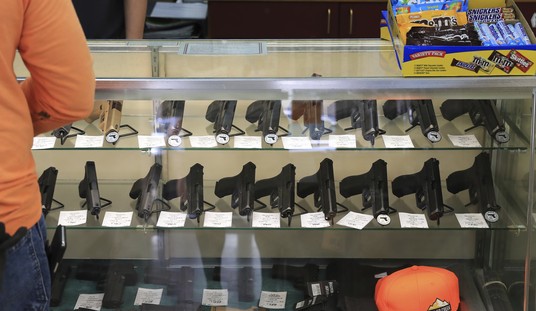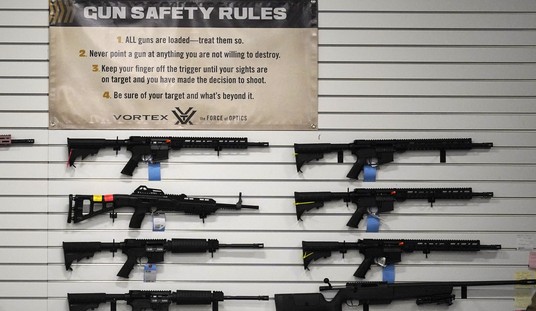If gun sales from the latter half of 2016 are any indication, tens of thousands of Americans probably gun their very first gun for Christmas yesterday.
To you we say, “congratulations!”

Whether it was a rifle or a pistol or a shotgun really doesn’t matter. What matters is that whatever firearm you receive, you learn to use it responsibly. If the person who gifted you a firearm (yes, gentle readers, that is entirely legal under federal law) is an experienced shooting enthusiast themselves then you may have someone who can already show you the ropes.
But what if you’ve got a new gun, and don’t really know anyone to train you on how to use it safely?
Never fear: help is at hand.
It may surprise some to discover that the National Rifle Association is first and foremost a firearms training organization. It’s the efforts of the NRA’s Institute for Legislative Action (NRA-ILA) and Political Victory Fund (NRA-PVF) that you see most often in the news.
The NRA’s massive training division has more than 125,000 instructors, 8,000 coaches, and 2,200 training counselors who teach more than a million people how to shoot every year.
There are dozens of classes offered by the NRA for students, broken down into five main subject areas:
- Pistol Courses
- Rifle Training Courses
- Shotgun Training Courses
- Home Firearms Safety Courses
- Personal Protection Courses
A NRA Home Firearm Safety Training Course is the very first course I would recommend for any new gun owner. It is a four-hour non-shooting course that covers safe gun-handling and storage in a classroom environment.
After that, I’d suggest one of the “Basics” or “FIRST Steps” courses that is specifically aimed at the sort of firearm you own. That may be NRA Basics Of Pistol Shooting, NRA FIRST Steps Rifle Orientation, NRA Basic Rifle Shooting Course, NRA FIRST Steps Shotgun Orientation, or NRA Basic Shotgun Shooting Course.
The “FIRST Steps” courses are focused on specific kinds of shotguns or rifles, while the “Basics” courses are solid entry-level classes to teach you how to use a firearm safely.

For those of you who received handguns and are primarily interested in them for self defense, the NRA offers three self-defense courses, and I’d personally recommend them in just this order, after the Basics Of Pistol Shooting Class, which is a pre-requisite.
- NRA Basic Personal Protection In The Home Course
- NRA Basics Of Person Protection Outside The Home Course
- NRA Defensive Pistol Course
I’ll direct you to the NRA Student Courses page for course descriptions and details.
The course rates may vary somewhat from location to location but they are reasonable. The round counts required is on the lower end of the spectrum and won’t break the bank, and the amount of time tends to be reasonable as well.
I’d highly recommend going to the link above, where you can input your state and ZIP code and find training dates and instructors near you.

For those of you who are specifically into rifles, I’ll also strongly recommend Project Appleseed, which is a nationwide, volunteer-run, rifle marksmanship program. While optimized for magazine semi-automatic .22LR rifles like the Marlin 795 or Ruger 10/22 at a 25-yard distance, the program offers “run what you brung” flexibility, and it’s very common for shooters to arrive with WW2-era M1 Garand rifles, AR-15s, and bolt-action rifles and perform very well. Project Appleseed focuses heavily on basic rifle fundamentals, and as an instructor in the program, I’ve seen everyone from brand new shooters, to highly experienced hunters, to Marines and soldiers deploying overseas on combat deployments thrilled with what they’ve learned in a two-day Appleseed class.
You’ll have the opportunity to take a crack at the AQT, or Appleseed Qualification Test (shown above), and a deceptively tough course of fire that accurately simulates engaging targets at 100, 200, 300, and 400 yards under time pressure with forced magazine and position changes. If you can score a minimum of 210 points out of 250, you can earn a rating of “Rifleman.” Passing the AQT at your first Appleseed is relatively rare (it seems to take 2-3 Appleseed weekends for most shooters), but it can be done, and gives you a strong foundation for future rifle shooting endeavors in the field, in more advanced classes, or in competition shooting.

What’s beyond NRA and Appleseed training? Frankly, the sky is the limit.
There are all sorts of training opportunities limited only by your budget and imagination.








Join the conversation as a VIP Member